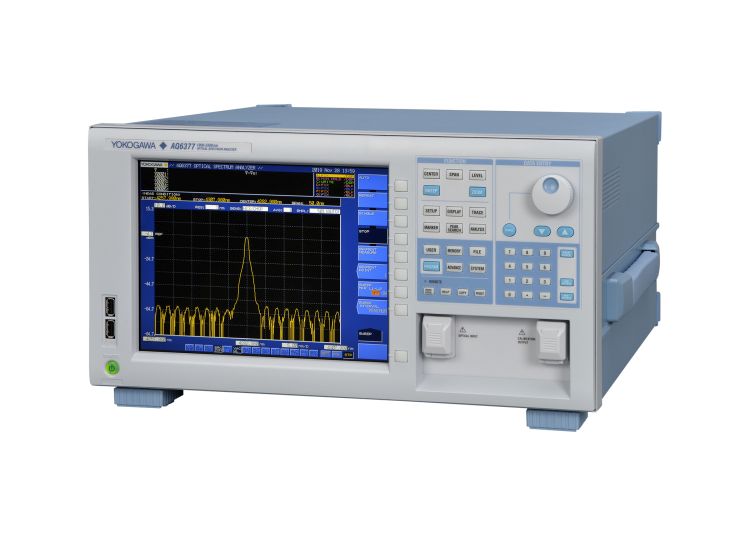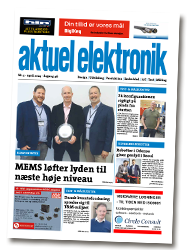 For environmental sensing applications, lasers are increasingly being used to detect gases such as CO2, N2O and NO. They achieve this by identifying the wavelength absorption lines of the different gases. However, the side modes of the laser, which are normally hard to detect, reduce the laser’s capability to distinguish between the various gases.
For environmental sensing applications, lasers are increasingly being used to detect gases such as CO2, N2O and NO. They achieve this by identifying the wavelength absorption lines of the different gases. However, the side modes of the laser, which are normally hard to detect, reduce the laser’s capability to distinguish between the various gases.
In the 3.5 to 5µm range (mid infrared) the AQ6377 is the only OSA that is capable of analysing the wavelength spectrum of lasers, including their side modes, with high accuracy.
Gas sensor system manufacturers will now be able to evaluate the purity of the emissions and to characterise the lasers more precisely, thus enabling the selection of the best laser(s) for specific applications.
Quantum Cascade Lasers (QCL), which are increasingly being used for medical spectroscopy diagnostics, operate using a pulsed technique, across a very wide wavelength range. The Yokogawa AQ6377 is now able to offer the capability to perform stable measurements in this wide wavelength range and also to evaluate pulsed QCL signals with low repetition rates, which has hitherto been difficult to achieve. The AQ6377 therefore delivers a true step change, allowing researchers to work with various pulse lengths and repetition rates.
Key features of the AQ6377, which together provide the capability to visualise the side-modes of MWIR lasers, include a wavelength resolution of 0.2 nm, a wavelength accuracy of ±0.5 nm, a high dynamic range of 50 dB, and a level sensitivity down to -60 dBm. The wide dynamic range and high sensitivity have been achieved by reducing the influence of stray-light in the monochromator. The built-in calibration light source takes advantage of the natural absorption properties of acetylene gas to deliver a wavelength calibration signal which is accurate to 0.6 picometres. This source is also used in conjunction with the automatic optical alignment capability to compensate for any deviation in the optical axis caused by vibrations and shock suffered in transit, and those due to temperature changes. Using those features, the AQ6377 can maintain its high optical performance on site.
In addition, the free-space optical input makes it possible to connect both single-mode MWIR fibres and multimode (up to 400 µm) to the same instrument, and delivers a low and stable insertion loss, which increases measurement repeatability. The lack of physical contact also eliminates the possibility of damage when fibres are connected.
Another important feature of AQ6377 is purging. In the MWIR region, spectral measurements can be strongly influenced by the absorption of water vapour and carbon dioxide. The purging feature is designed to significantly reduce the influence of these gases by continuously supplying a pure purge gas, such as nitrogen, to the monochromator through the dedicated connectors on the back panel.
“With the global attention to air quality and the effects of greenhouse gases, we take pride in our ability to help improve the accuracy of their measurements.”, says Terry Marrinan, VP Sales & Marketing Yokogawa Europe and South-East Asia: “By creating the AQ6377 high performance OSA, we are responding to the needs of customers developing solutions for optical gas sensing as well as surgical equipment who require measurement equipment of a maximum performance that is also easy-to-use and maintain.”
For further information about the AQ6377 5 µm Optical Spectrum Analyzer please visit: https://tmi.yokogawa.com/eu/solutions/products/optical-measuring-instruments/optical-spectrum-analyzer/aq6377-optical-spectrum-analyzer/

